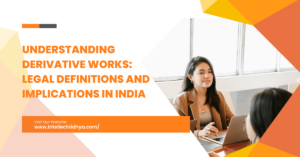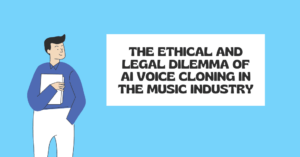A patent specification is a techno-legal document that provides detailed disclosures about the invention and the extent of the protection that would be accorded to it to the general public. It gives the applicant the chance to submit technical and scientific details about the innovation in order to be qualified to receive patent protection. There are two types of specification that is submitted as Form 2 along with a patent application (Form 1) including provisional and complete specification.
Provisional specification:
A provisional specification is a broad overview of the invention that discloses the field of invention with broad scope and objective of the invention. The main purpose of submitting a provisional specification is to claim a priority date of patent application. It is useful when the invention is in its conceptual and preliminary level. A patent application can have more than one provisional specification disclosing various aspects of a single invention. If multiple provisional specifications are cognate, the Controller allows the applicant to file a single complete specification. In any case, a complete specification should be filed within 12 months from the earliest date of filing of the provisional specification. If not, the application shall be deemed to be abandoned (Reference Section 9(1) and 9(2),The Patents act, 1970).
Complete specification:
A complete specification includes a complete disclosure of all the technical and scientific details of an invention in the form of embodiments. It should include all the components, features and the best method of performing the invention so that any person skilled in the art can easily understand and recreate the same invention with the information given in the embodiments. A complete specification can be treated as a provisional specification by the Controller, if the applicant requests the Controller within twelve months from the priority date (Refer Section 9(3),The Patents act, 1970).
Content of specification:
The various content of specification as per Section 10 of The Patents act, 1970 is listed below:
(a) Title – The description begins with a title that sufficiently indicates the subject-matter to which the invention relates and should not exceed 15 words.
(b) Name and address of the applicant – The full name and the complete address of the applicant along with the nationality should be disclosed.
(c) Preamble – Preamble is an introductory statement that is different for provisional and complete specification.
In case of provisional specification, the preamble should be “The following Specification describes the invention”.
In case of complete specification, the preamble should be “The following complete specification particularly describes the invention and the manner in which it is performed”.
(d) Field of the invention – This defines the broad technical area that relates to the invention.
(e) Background of the invention – This includes the existing prior arts and their respective limitations or drawbacks. This should end with one or more problem statements and a corresponding solution statement using the invention. This is useful for the patent examination procedure.
(f) Objective of the invention – An invention can have more than one objectives and should be listed in this section. This includes the novel features and/or components that are part of the invention and a simplified process of performing the invention.
(g) Summary of the invention – A summary discloses the scope of the invention and recites the essential features of the invention. This also includes the advantages and application of the invention.
Drawings and Description of drawings
Drawings are provided for the better understanding of the inventions. In this section, the drawings are listed by Arabic numerals and illustrates the representation of the drawings. The same number is referred in the description wherever applicable. As per rule 15 of The Patent Rules, 2003 the drawings:
- Should be neatly prepared on a A4 size with a clear margin of at least 4 cm on the top and left hand and 3cm at the bottom and right hand of every sheet.
- Scaled sufficiently large to show the inventions and the components/features are numbered sequentially.
- Should not include dimensions and any descriptions except in case of a flow chart.
Detailed description of the invention
The section should sufficiently and clearly describe the invention along with the method by which it is to be performed to enable a person possessing average skill in, and average knowledge of, the art to which the invention relates, and to work the invention. The description can be provided along with a detailed drawing to understand the invention better. In case of a product invention, the components and composition of the final product has to be described in detail. In case of a process invention, the steps of the process should be explained in detail and include all the distinguishing features of the steps. It is essential that the unique component or the step of the invention is characterized to differentiate from the components or steps in the prior art.
If a biological material is used in the invention, it should be included in the description and if such material is not available to the public, the application shall be completed by depositing the material before filing the application to an international depository authority (Refer Section 10, The Patent Act, 1970). All the available characteristics of the material has to be correctly included in the specification including the name, address of the depository institution and the
date and number of the deposit of the material at the institution. The source and geographical origin of the biological material should be disclosed in the specification.
Claims
The claim or claims of a complete specification shall relate to a single invention, or to a group of inventions linked so as to form a single inventive concept. It shall be clear and concise and shall be fairly based on the matter disclosed in the specification. Each claim should contain a single sentence with the proper use of punctuations.
In terms of structure, there are two type of claims namely independent and dependent claims. The first claim is an independent claims and the subsequent claims are dependent claims. There can be multiple independent claims in an application. Each independent claim defines novel and inventive features of the invention for which the monopoly of the patent is sought. Dependent claims narrow the scope of the independent claims which recites the specific features of a component in the independent claims.
As per The Patent act, 1970 an invention relating either to a product or process that is new, involving inventive step and capable of industrial application can be patented. However, it must not fall into the categories of inventions that are non- patentable under sections 3 and 4 of the Act.
Based on this criteria, either a product or a process can be claimed. The product claim includes apparatus, device, machine and composition of a final product. The process claim recites a series of steps that results in a product.
Abstract
An abstract commence with a title of the invention and should not exceed 150 words. In the presence of drawings, it should be accompanied with at least one drawing that shall be published. The abstract is a concise summary of the matter contained in the specification that summarizes the technical advancement in the field of the invention, principal use of the invention, a simple process and novel features of the invention which characterise the invention from its prior art. The abstract shall contain the chemical formula or structures depending on the need. These information are particularly useful for the examination process during the prosecution stage to confine the invention to a particular field. (Reference Rule 13,The Patents Rules, 2003).
Contact Intellect Vidhya Solutions for IPR Services.









